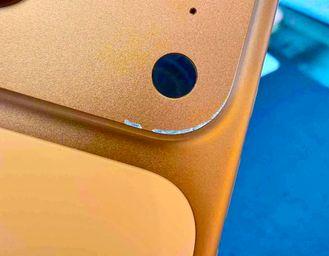LED lights have become a standard in homes and offices, but their safety remains a source of heated debate. Viral posts about ditching LEDs for incandescent bulbs have fueled the controversy, leaving consumers confused about whether their lighting choices could be harming them.
Featured VideoAccording to health officials, “More research is needed to determine exactly how much blue light is safe for your eyes and overall eye health.” However, critics warn that the blue light and pulsing frequencies from LEDs may contribute to eye strain, headaches, and disrupted sleep.
Not all LED lights are created equally, and they don’t actually flicker or flash; they pulse. Higher frequency PWM (Pulse Width Modulation) LEDs emit rapid, controlled, and often programmable on-and-off cycling that is possibly safer for sensitive users.
LED lights, in slow motion
The X account @thehealthbot posted a video of LED lights slowed down, showing a strobing effect.
AdvertisementIt was retweeted by account @BasedTorba, who wrote, “Replaced all of the LED lights in our house with Edison incandescent bulbs a while back. Started sleeping better, stress went down, animals were more relaxed, got sick much less, etc.”
This repost racked up 2.5 million views on X, and Torba followed up with charts and reposts. He commented, “LED lights are the seed oils of lighting,” and, “Don’t even get me started on the hell that is nighttime driving in modernity. They need to be banned.”
While some commenters echoed Torba’s firm stance, others pointed out that LED bulb quality varies. @formerworm replied, “you could get Philips ultra definition bulbs which have a 1-2% flicker rate. The video you linked are the absolute bottom of the barrel cheap LEDs.”
AdvertisementX users frustrated by the squishy LED controversy dismissed the posts as fear-mongering.
@ICE_AgentBender wrote, “We went back to candles and are much happier. Occasionally it burns down my horse stable and vampires attack. But the stress level is low enough it’s not that big of a deal.”
People concerned about the potential health effects of LED lighting can purchase higher frequency “flicker-free” bulbs
LED technology uses a type of digital signal called “Pulse Width Modulation” (PWM). In contrast with power controlled by voltage adjustments, PWM is an electrical signal that is modified by rapidly turning a transistor on and off.
AdvertisementAlthough mostly imperceptible to the human eye, the operating frequency of LEDs with PWM makes a difference. Low PWM frequencies (under 1kHz) can be detected by the brain, even if they’re not consciously perceived. Higher frequency PWM LEDs (20 kHz or higher) enable an on/off cycle short enough to become imperceptible.
Here’s how you can tell if your LEDs are “good PWM” or “bad PWM”
- Check the specs: Look for products labeled “flicker-free” or that specify a high PWM frequency (20 kHz or more).
- Smartphone camera test: Most smartphone cameras have fast enough shutter speeds to reveal the rate of an LED’s on-off cycle. If you’re able to dim the light, record it with your smartphone camera and check for thick bands appearing onscreen. This could indicate a low-frequency bulb.
- The “wave” test: Dim the light and wave a long, thin object such as a pen or even your hand, in front of your eyes. If the motion seems to strobe and doesn’t smoothly blur, the bulb is low frequency.
The internet is chaotic—but we’ll break it down for you in one daily email. Sign up for the Daily Dot’s newsletter here.

 Anche iFixit ha confermato lo scratchgate degli iPhone 17 Pro, che si sarebbe potuto evitare con un design diverso
Anche iFixit ha confermato lo scratchgate degli iPhone 17 Pro, che si sarebbe potuto evitare con un design diverso